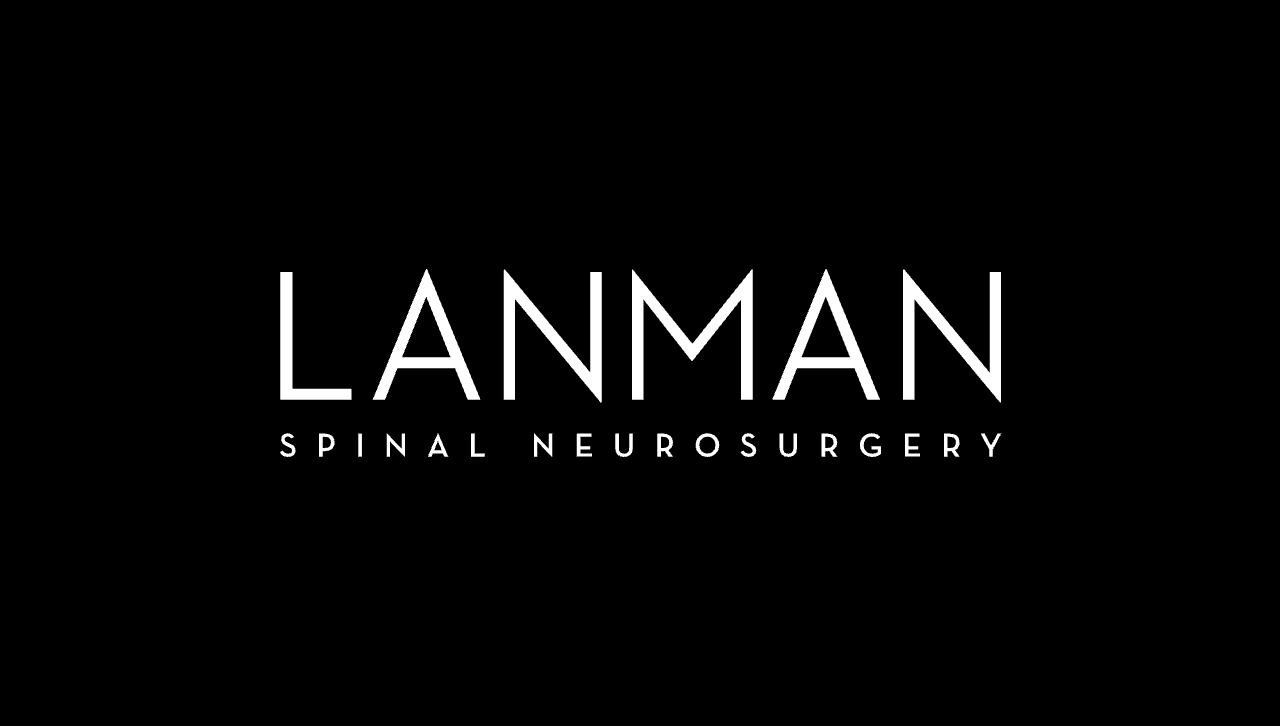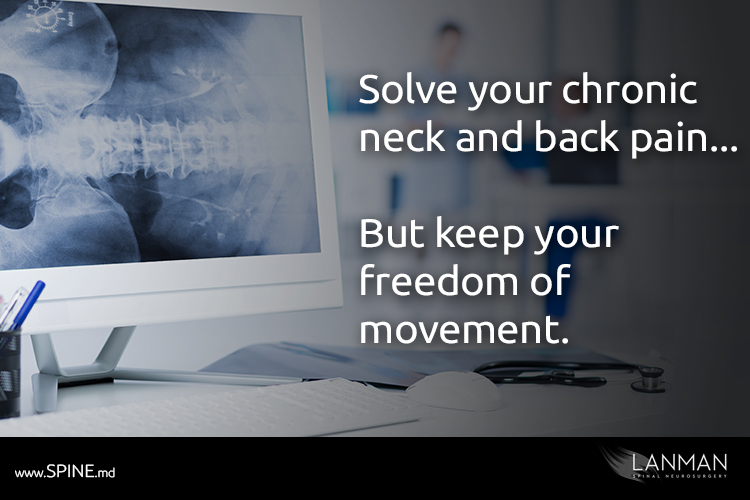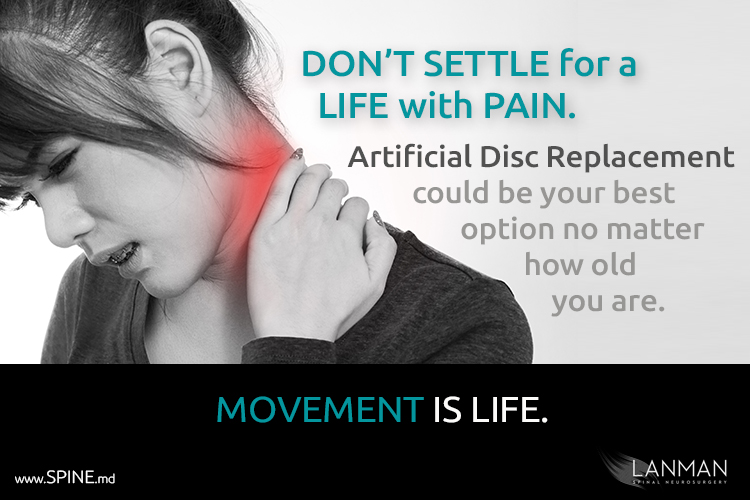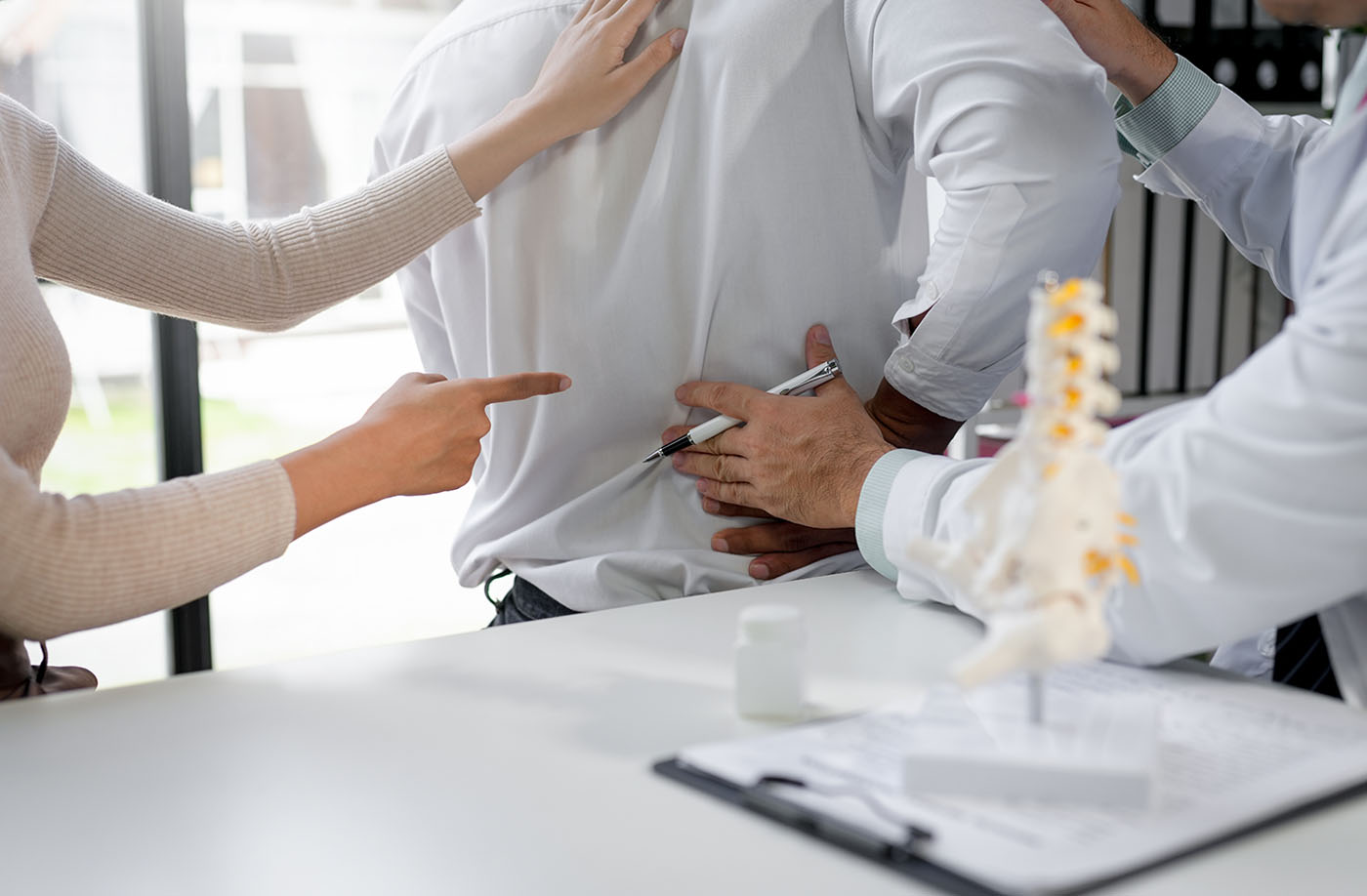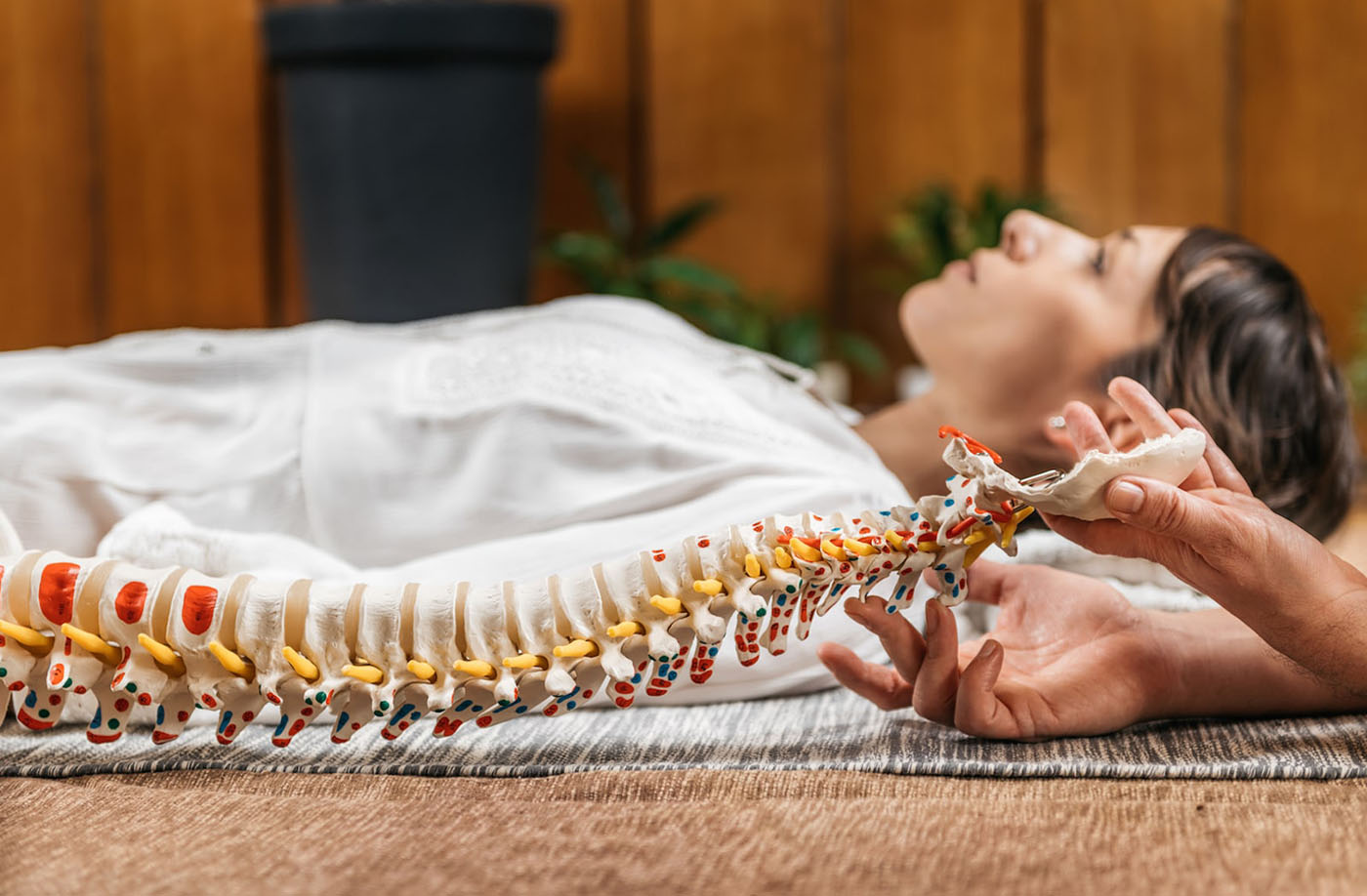How to keep your freedom of movement AND solve your chronic neck and back pain.
Pain is a natural part of life, but especially as we age. Now that we are living longer and, as we age, we tend to want to stay active as long as possible, pain is all but inevitable. Chances are much higher that we will encounter some situation – some injury of some kind – that develops into chronic pain along our spine: especially in our neck (cervical) and lower back (lower back). What is important, is what we do about the pain.
Every day – at my spinal neurosurgical practice in Beverly Hills and in my capacity as a member of the Cedar-Sinai Medical Center Institute for Spinal Disorders in Los Angeles – I meet more and more patients who fall into the general category of active adults who have been injured in some way. They come to me because they want relief so they can enjoy the highest quality of life possible. But beneath their drive for a full and fulfilling life, I find that many of them are also fearful of what their diagnosis will mean for them.
When older patients think of neck and back pain, often they think of friends and family members who have had neck or back surgery. Usually, these thoughts are fueled by stories from 10 – 20 years ago: bedridden for months, complications, limited motion for a lifetime, and loss of freedom. I’m happy to say that medical technology has advanced to a new degree that changes this picture altogether.
It’s a good thing too when you consider all the bad habits we’ve picked up in the last decade. I’m thinking of what is often called “text neck” – injuries to the neck because of habitual poor posture when using laptops and cell phones. But we’re also enjoying active lifestyles in the form of sports or other activities. As I mentioned earlier, the fact that we’re living longer makes it more likely that we will develop a problem along our spine that needs medical attention.
A high quality of life is pretty tricky to achieve when you have chronic and intense neck and back pain. Let’s say that the source of pain is a failure of a disc – possible herniation or degeneration. Or perhaps you have a bone spur (abnormal bone growth) or a narrowing of the foramen (nerve channels) that is compressing a nerve. In any of these cases, there are four major types of surgery you can have to relieve neck and back pain: laminectomy, discectomy, spinal fusion, and artificial disc replacement.
If your condition allows, I will recommend a laminectomy to remove bone or microdiscectomy to remove disc material. Both procedures are useful in decompressing pressure on a nerve. The advantages of these procedures are that they result in no change to the mechanical structure of the spine, ligaments, and muscle. In most cases, these are outpatient procedures, and patients usually go home with less pain than when they started.
For many more severe cases, spinal fusion or artificial disc replacement may be recommended. In my opinion, too many patients are told that their only treatment option is spinal fusion. And this is where I believe the source of the fear really lies – but not just for older patients. I’ve seen patients in their mid-twenties who have been fused!
In my professional opinion as a neurosurgeon for more than 25 years and a medical researcher of several clinical studies, spinal fusion should be reserved only for the most severe cases. Fusion has dominated America and Europe as a surgical treatment method for more than 100 years. It is what I consider “brute force” for the treatment of conditions that lead to extreme back and neck pain. The result is something that we should all fear: the complete and permanent immobilization of the flexible joint level between vertebrae. After fusion, the patient faces two clinical problems. First, they see an immediate degradation of their freedom of movement. Second, there is a very high likelihood that they will develop new challenges (and new pain) due to increased stress on the non-fused adjacent vertebrae.
Artificial Disc Replacement (ADR) is not just an alternative for fusion – it is the single, most viable treatment solution for cases where such surgery is recommended. ADR patients retain full movement of the spine – no matter how old they are. Moreover, ADR patients find relief from pain with fewer postoperative complications. In fact, nearly all the patients I see who come to me with a tentative diagnosis of “Failed Back Surgery Syndrome” (FBSS) have previously undergone spinal fusion.
Living longer opens us up to new challenges for our health. Naturally, as we live longer, we want to do more with the time we have. That makes pain something that’s as inevitable as the rising sun. But we do not have to settle for a life with pain – nor should we fear it.
I trust modern medical technology, and I trust our ability to produce new ways to solve old problems. My work on artificial disc replacement is proof that the process works: we can move on, we can continue to enjoy life to its fullest. And that’s how we all can be greater than better.
